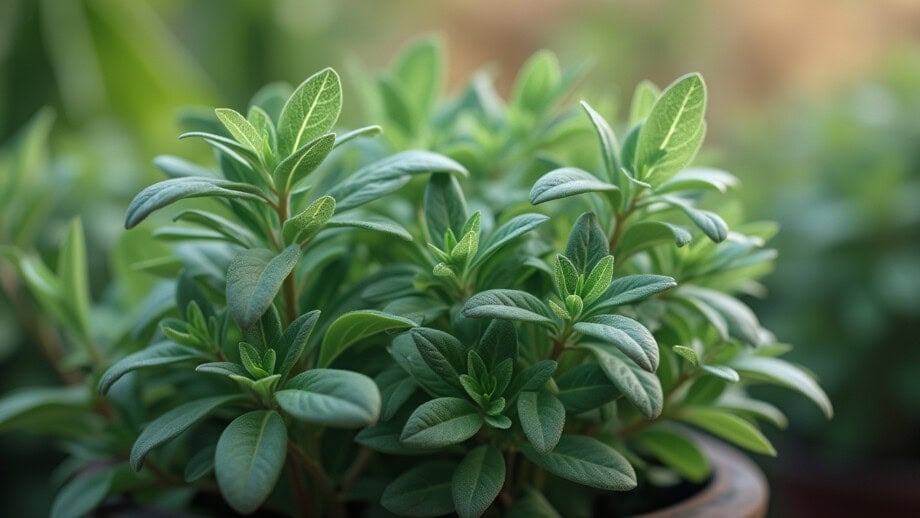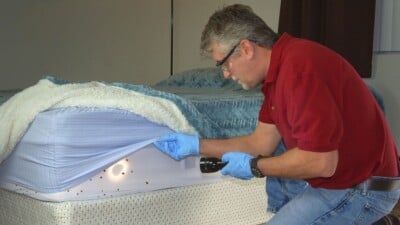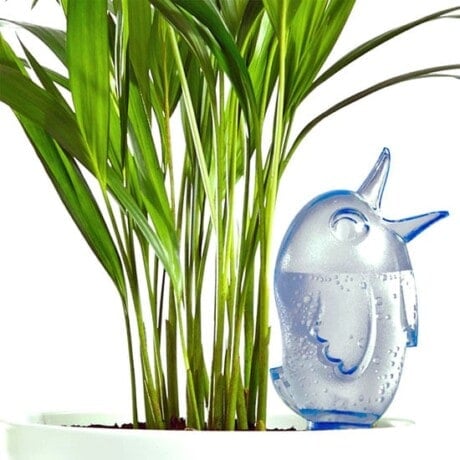Herbs in Pots
An herb garden is a wonderful thing. Having a potted herb garden that you can harvest year round is a chef’s dream come true!


Best Grow Light
for Indoor Plants
4-Foot Fixtures
Ideal for shelves or over bench tops -- extremely powerful with very low heat!
Learn moreType of Container
Let your imagination run wild when considering what type of container to grow herbs in. Just about anything will work, but keep in mind, most varieties prefer fast draining soil. As long as the container you select has adequate holes and drains well, you should be in good shape. Some of the most popular container choices are made out of terra-cotta, wood and cement (see Plant Up A Container). Although herb gardeners often prefer terra-cotta because of it’s natural wicking capability. If you’re looking for style as well as practicality, try using a Mexican strawberry pot. You can grow a bunch of different herbs in it and when you need some flavor for your food … it’s all right there!
The patented Smart Pot is a new and practically foolproof way to grow potted plants. These reusable, soft-sided fabric containers prevent roots from circling and release heat so they’re much cooler — plants develop a better root structure so plants stay healthier.
Another thing to remember when selecting a container is that size does matter. The pot must fit the plant – or plants – that will be growing in it. If the container is too small your herbs may quickly become root bound. On the other hand, if the container is too large your plants may spend all of their energy on root production and not grow the way they should.
With the right gardening supplies growing exotic and flavorful herbs is easy! At Planet Natural we have everything you need: pots, soils and seeds to get started, plus grow lights to bring the green-giving magic of the sun indoors. Now, let’s grow!
Sun/Light
The essential oils that give herbs their flavor and aroma are produced in the largest quantity when they receive plenty of light. For best results, most herb varieties require at least 6 hours of sun per day. If growing indoors, many plants will do fine on a south facing windowsill. If the amount of light is not enough, you can supplement light with fluorescent lamps or a grow light, especially during the winter months.
When selecting plants for container gardening, consider the amount of light that is available for a particular spot and read the lighting requirements found on individual seed packets and plant labels. If planting several containers in one area, or several plants in a pot, do not mix plants with different lighting requirements.
With that said, it is wonderfully easy to provide plants with the light they need when your using containers. If you notice that they are not getting enough sun, just pick them up and move them to a sunnier spot. If they are in too much sun, move them to a shadier location. Shifting container locations is also desirable as the amount of available sunlight changes with the seasons.
Herb Varieties & Lighting Requirements |
||
|
Full Sun
|
||
| Anise Arnica Basil Borage Calendula Caraway Catnip |
Chicory Cilantro/Coriander Dill Fennel Hyssop Lavender Mustard |
Oregano Rosemary Sage Summer Savory Tarragon Thyme Yarrow |
|
Partial Sun
|
||
| Aloe Beebalm Chamomile Chervil Chives Comfrey Echinacea |
Garlic Lemon Balm Lemon Verbena Lovage Marjoram Mint Nasturtium |
Parsley Soapwort Sweet Cicely Sweet Woodruff Tansy Violet Wintergreen |
Soil
When you grow plants in containers, it’s important to provide them with a high quality potting soil or soil-less mix. In other words, you can’t just run out to the backyard, dig up a little dirt and call it good. Ordinary garden soil is much too heavy and dries out quickly. What you’re looking for is a soil that is loose and well drained. You can purchase a quality potting soil, or you can make your own. Here’s a popular recipe for container grown plants:
Make Your Own Potting SoilWhy purchase potting soil when you can make your own. A good potting mix recipe contains sterile garden soil and compost, peat moss (or coconut coir) and other additives as needed.
|
Fertilizer
While most herbs require little fertilizer, you do need to pay closer attention to container grown plants. Because the amount of soil around the plant is limited to the size of the container, it dries out faster and requires more nutrients than the soil in your garden. For herbs, usually all that is needed is a good all-natural organic fertilizer which can be mixed in with the potting mix prior to planting. If your plants loose their color or look a little peeked during the growing season, apply a good liquid fish and kelp fertilizer at half the recommended strength every few weeks.
Apply fertilizers sparingly to herbs. Heavy applications will produce large plants, but the essential oils that produce their flavor and aroma will be greatly reduced.
Note: Plants can absorb nutrients through both their roots and through leaf pores. Foliar feeding (applying fertilizer solutions through leaf pores) can supply nutrients to your plants immediately. It is especially effective for giving fast growing plants, like vegetables, an extra boost during the growing season.

Watering
When it comes to watering, container gardens dry out faster and require more attention than backyard gardens. How much you water will depend on several factors including:
- Type of soil or potting mix used
- Amount of exposure to sun, rainfall and wind
- Average temperature
- Size of your plant(s)
If temperatures are warm, a container may require water once or twice a day. Watch closely and water when the potting mix appears dry and pale, or has shrunk away from the sides of the container. Also, poke your finger in the soil. If it feels moist, it’s all right. If it feels dry, start watering. Keep in mind, that many herbs prefer dry conditions. In most cases, they will not have to be kept as moist, as say, your favorite tomato plant. Unfortunately, this doesn’t apply to all herbs – so make sure you check the watering requirements for individual plants.
Tip: If your plants require more water than you can give them or you’re going on vacation, consider using an Automatic Plant Waterer. Simply fill with water and rest assured that your plant will be perfectly watered for up to four days. Available in TWO sizes, for large and small container plants.













